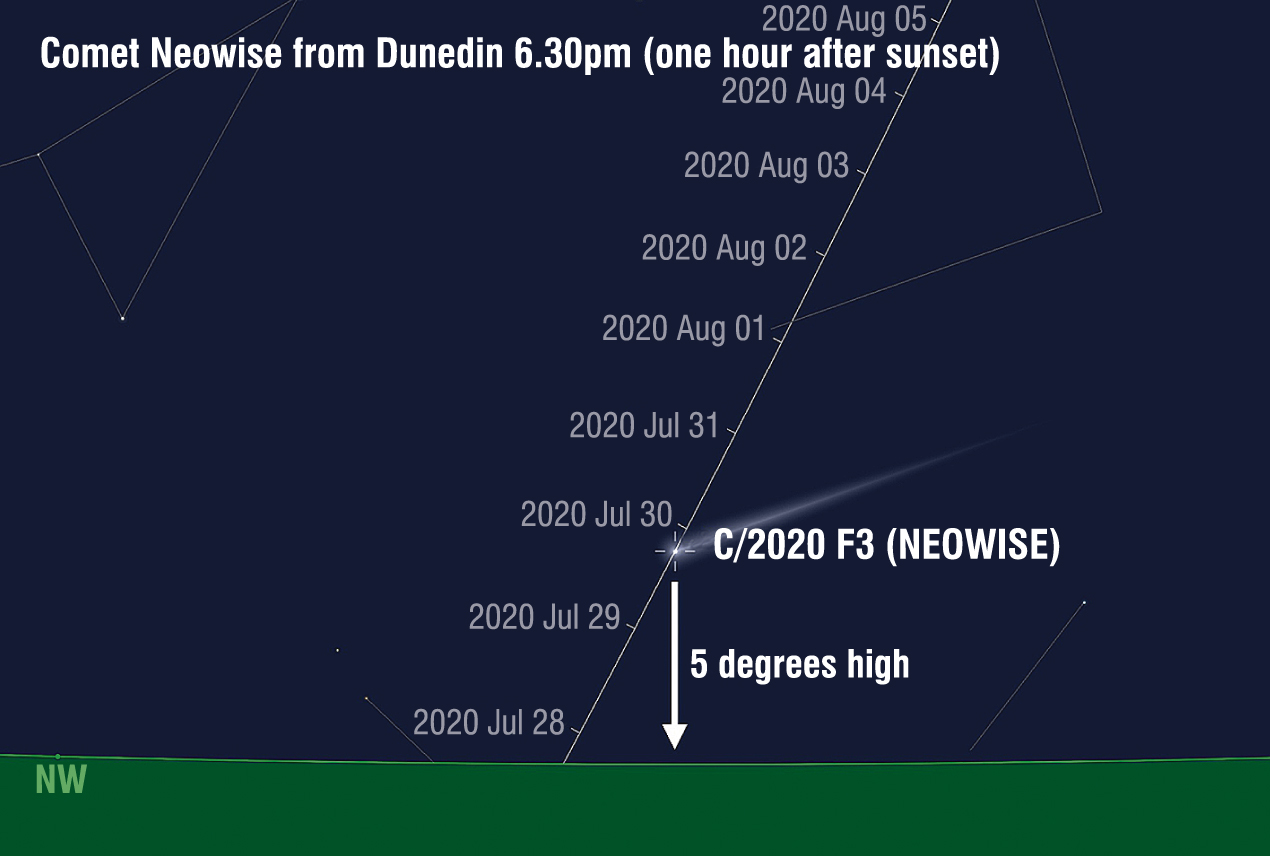
So when reading this column, encouraging you to try to spot a relatively bright comet after sunset, please keep in mind something Levy once wrote: ‘‘Comets are like cats: they have tails and do precisely what they want”.
Over the past weeks, C/2020 F3 Neowise has been putting on quite a show in the northern hemisphere. Visible to the naked eye, the comet sports a lovely tail and is generating tremendous excitement and amazing photographs.
Neowise hasn’t yet been observable from New Zealand, but that changes this week, when it might be visible low in the northwestern sky after sunset. I say ‘‘might’’, because the comet is fading. It passed closest to Earth on July 22 when it was just over 100,000,000km away. From now on, its distance increases daily. While the comet may still be visible to the naked eye, it’s more likely that you will need a pair of binoculars.
As our chart shows, each night the comet climbs a little higher in the sky. To see it, you will need to find a spot well away from light pollution. An unobstructed horizon view is essential for any chance of success.
Comet Neowise was discovered by, and gets its name from, a team using a re-purposed space telescope, the Wide-Field Infrared Survey Explorer (Wise), for hunting for near-Earth objects (Neos). The comet was discovered on March 27 this year. It is thought it last passed through the inner solar system about 4500 years ago.
These days bright comets are seen as astronomical crowd-pleasers. This hasn’t always been the case. In the past, the sight of a comet was seen as a portent of doom. I’m sure we all hope that’s not the case with Neowise.












